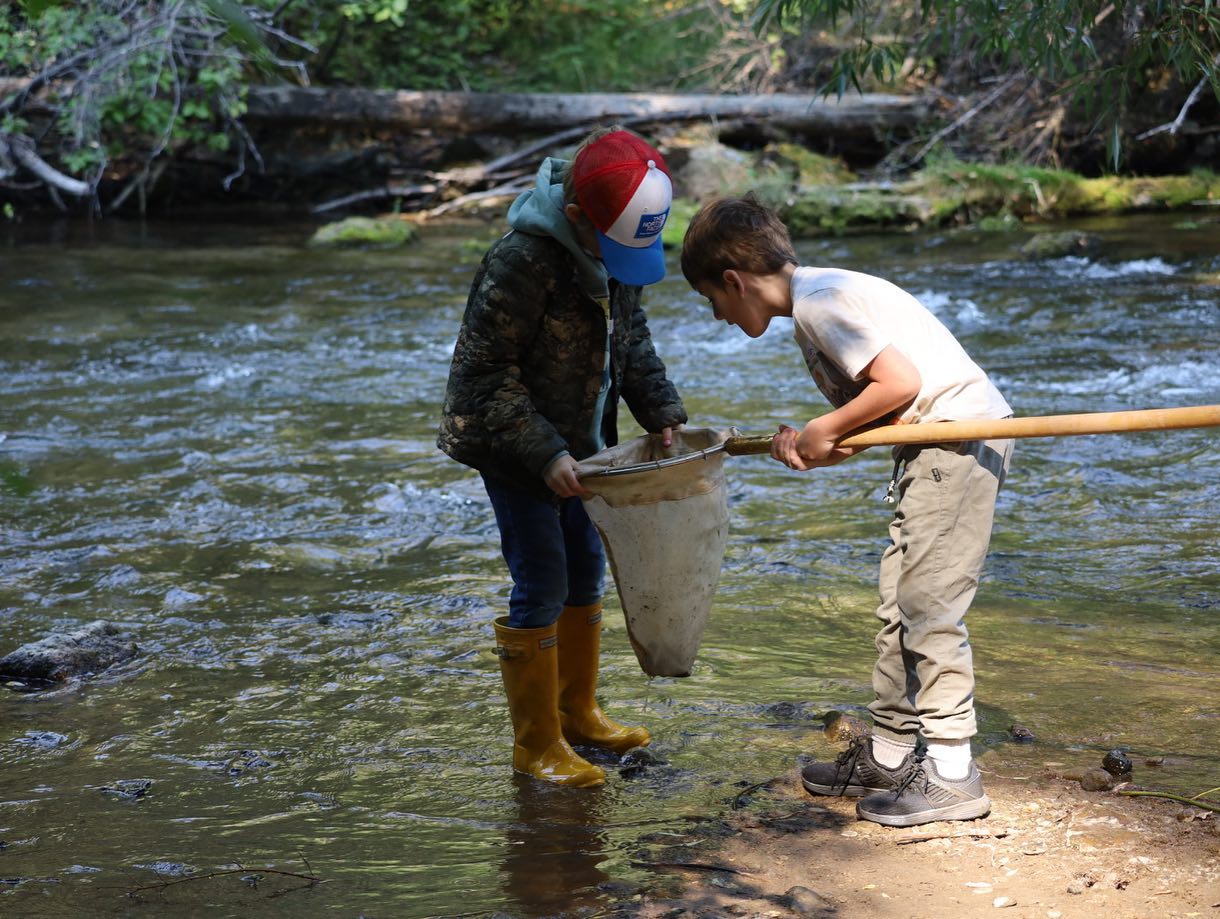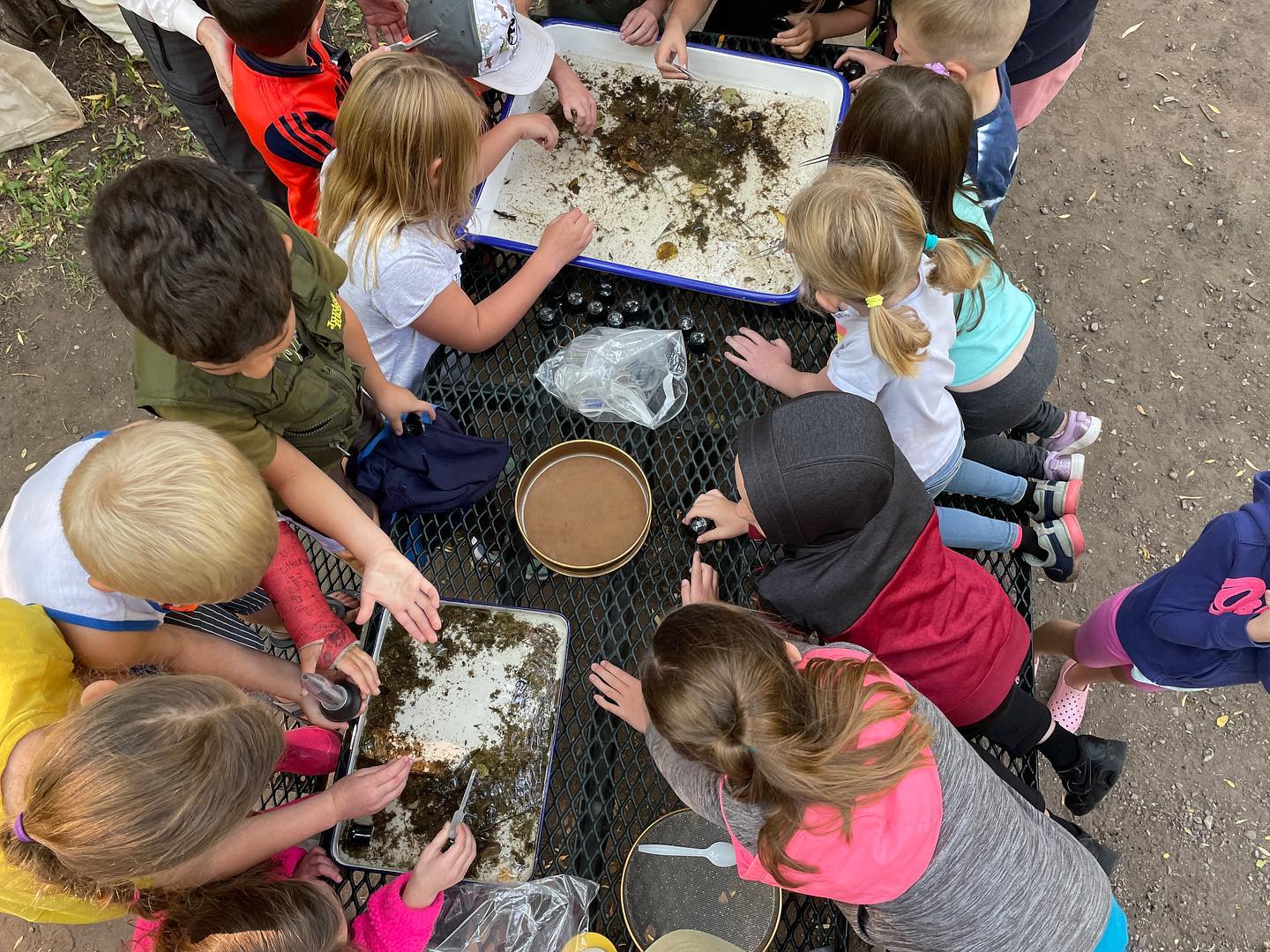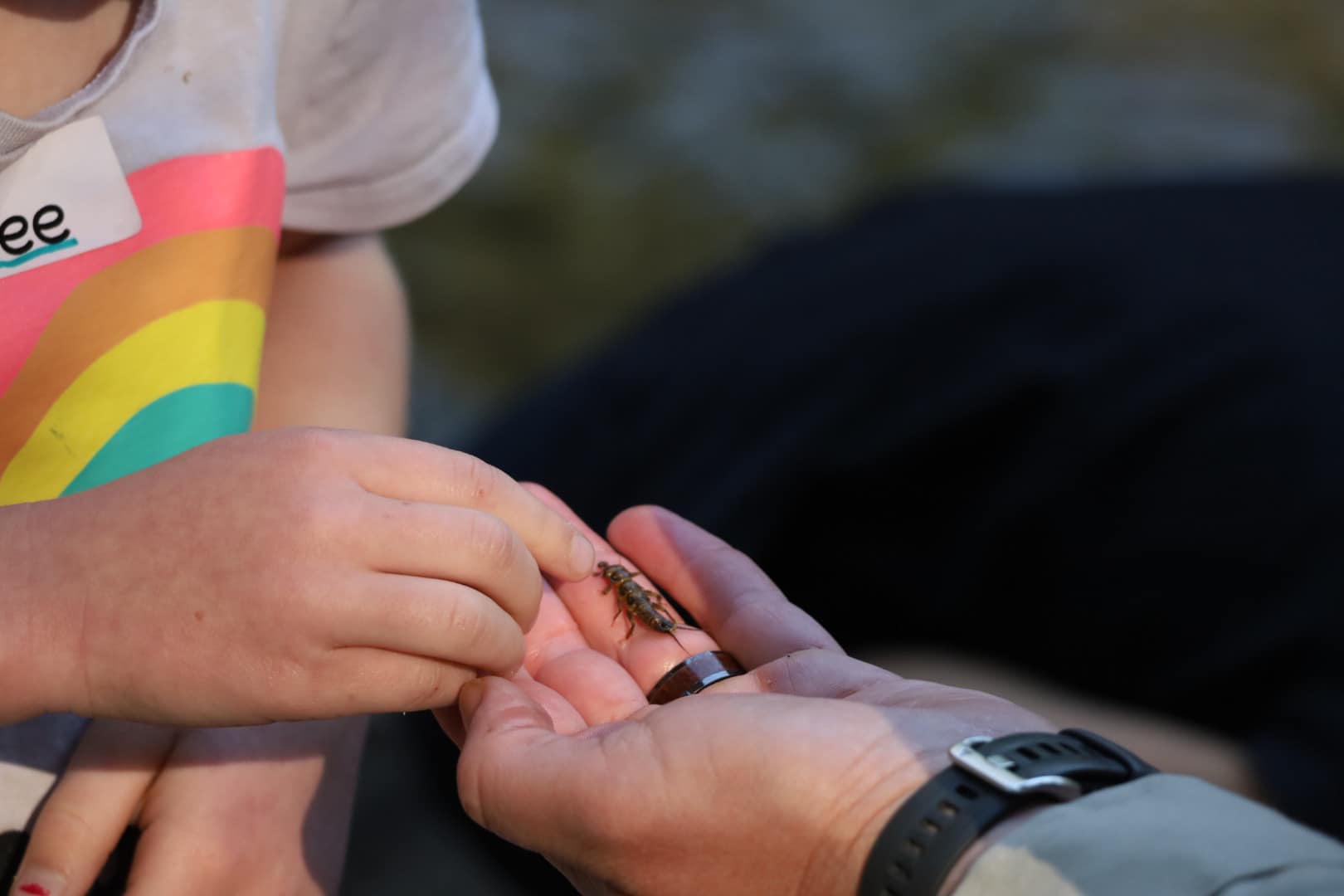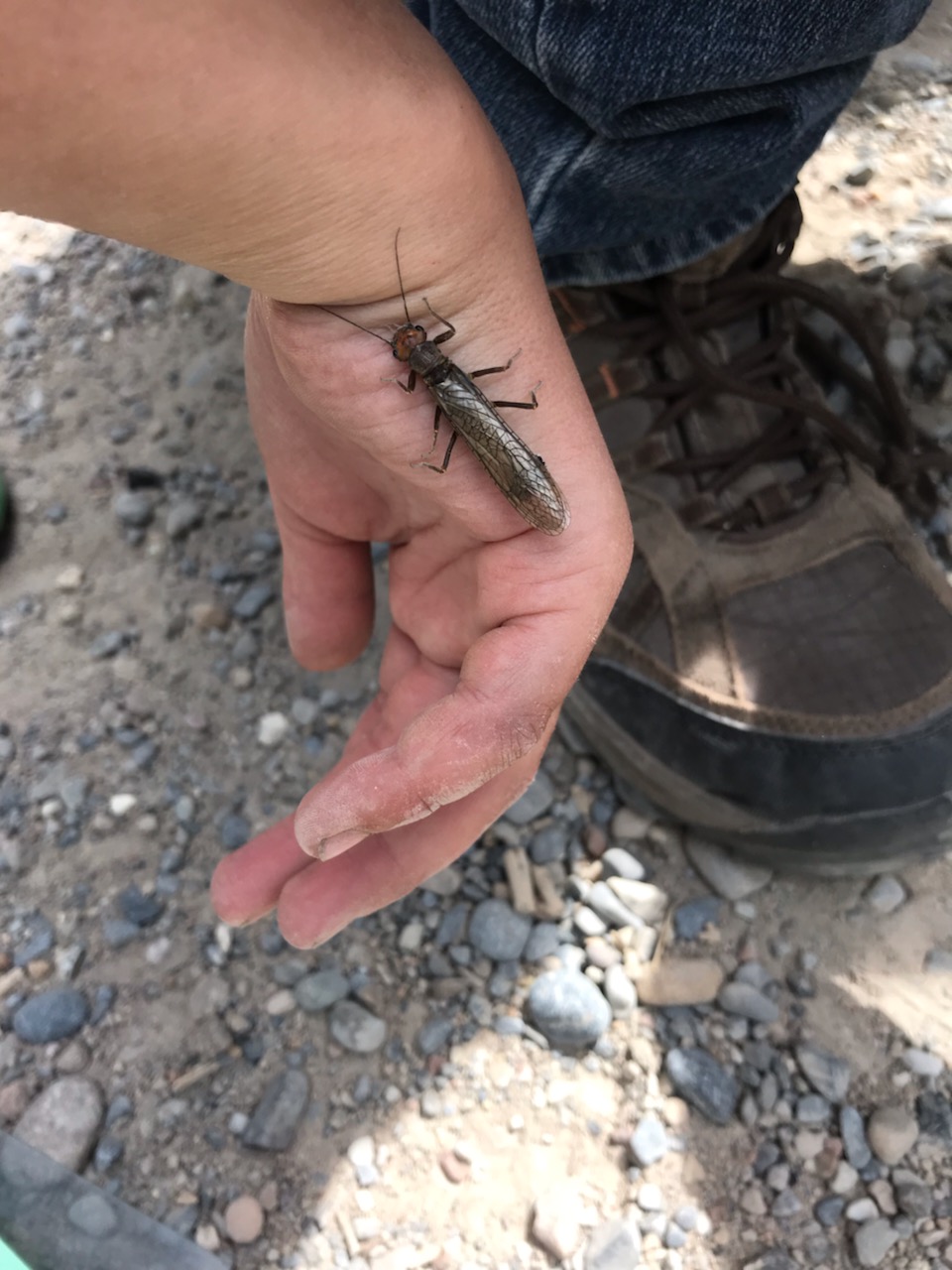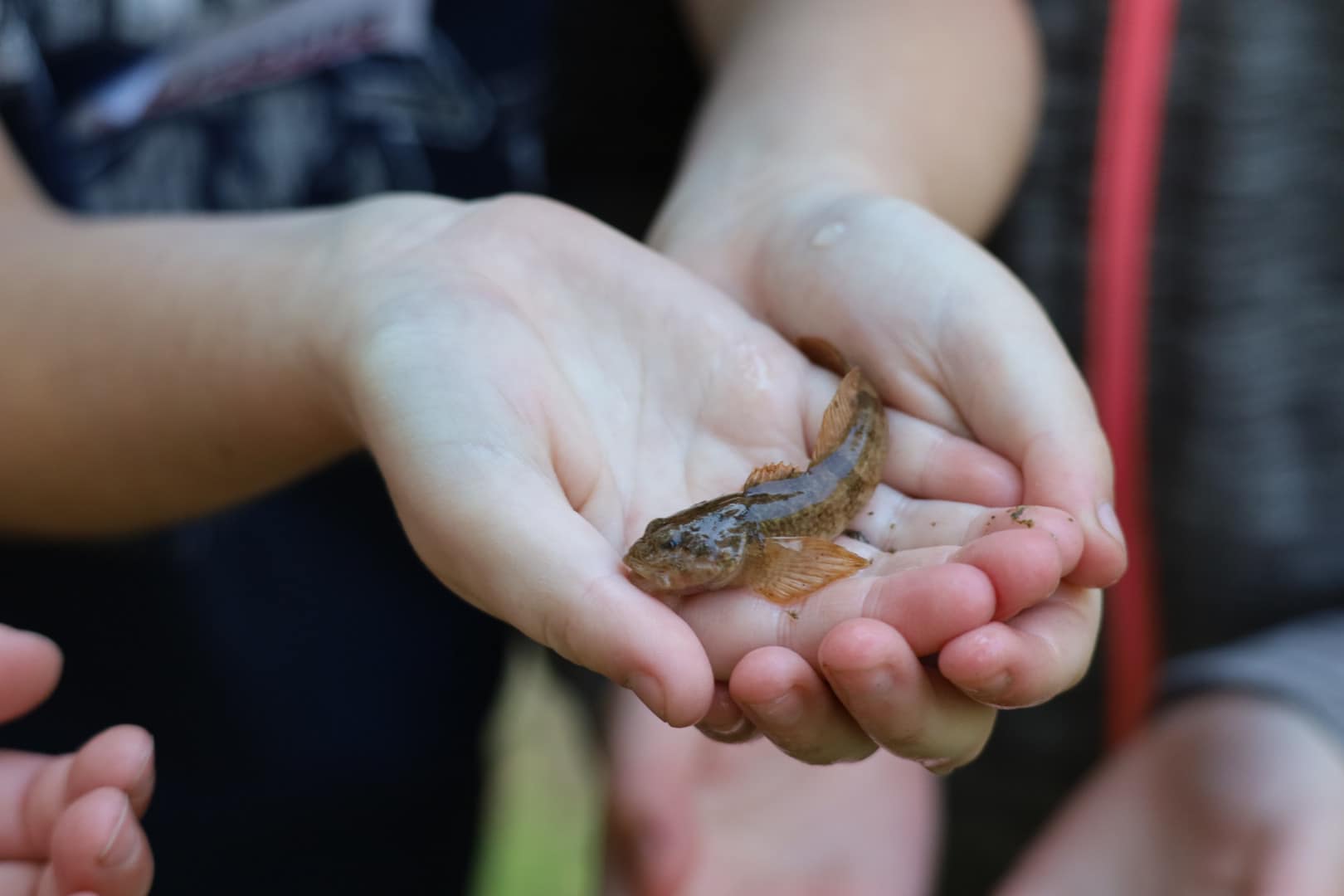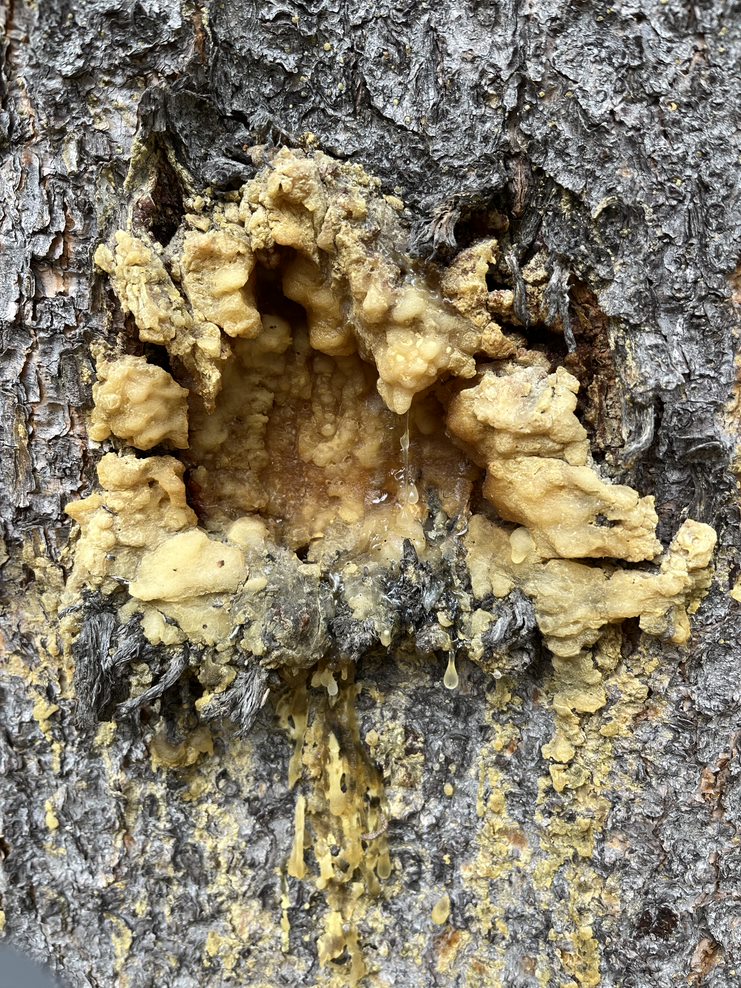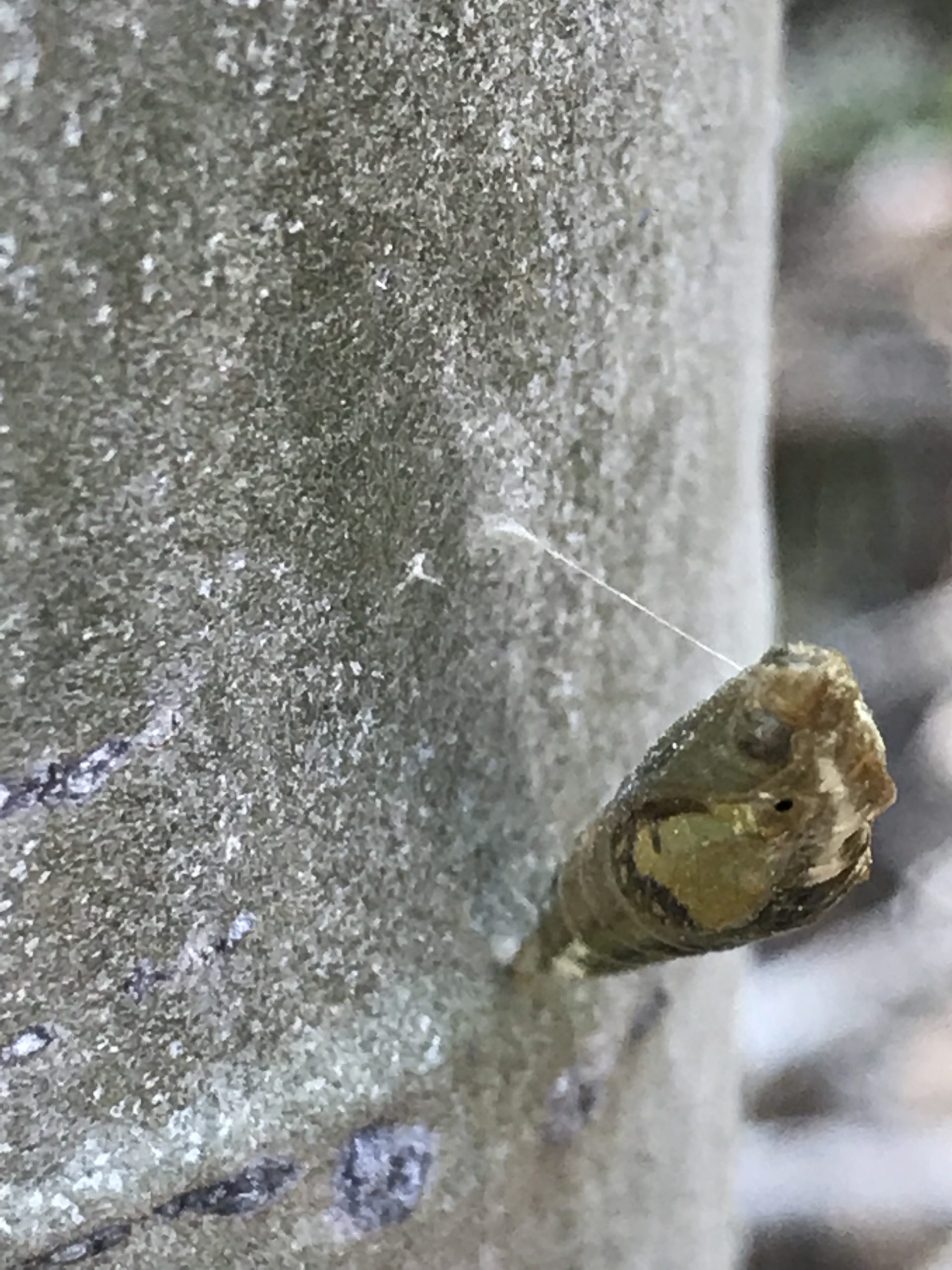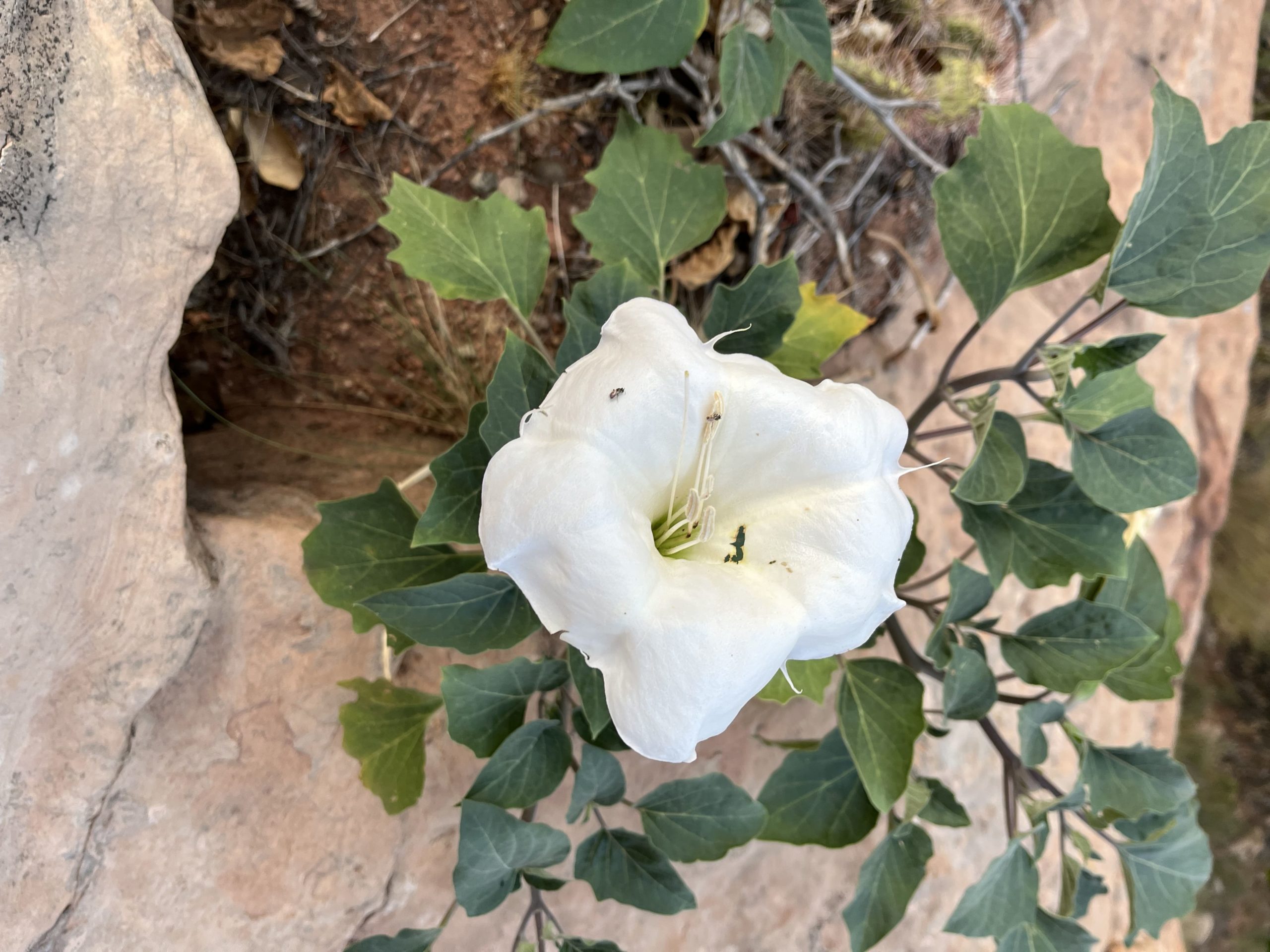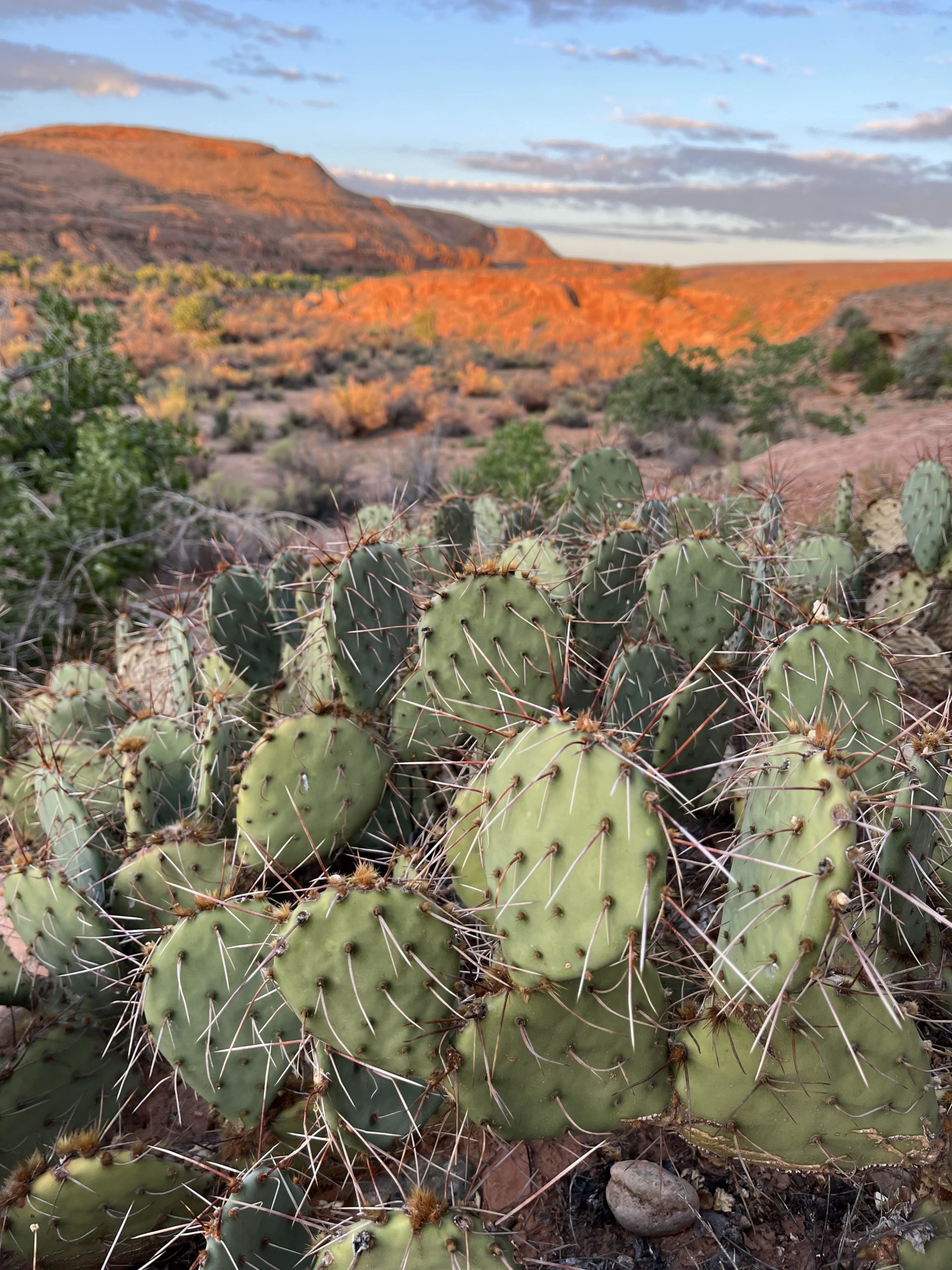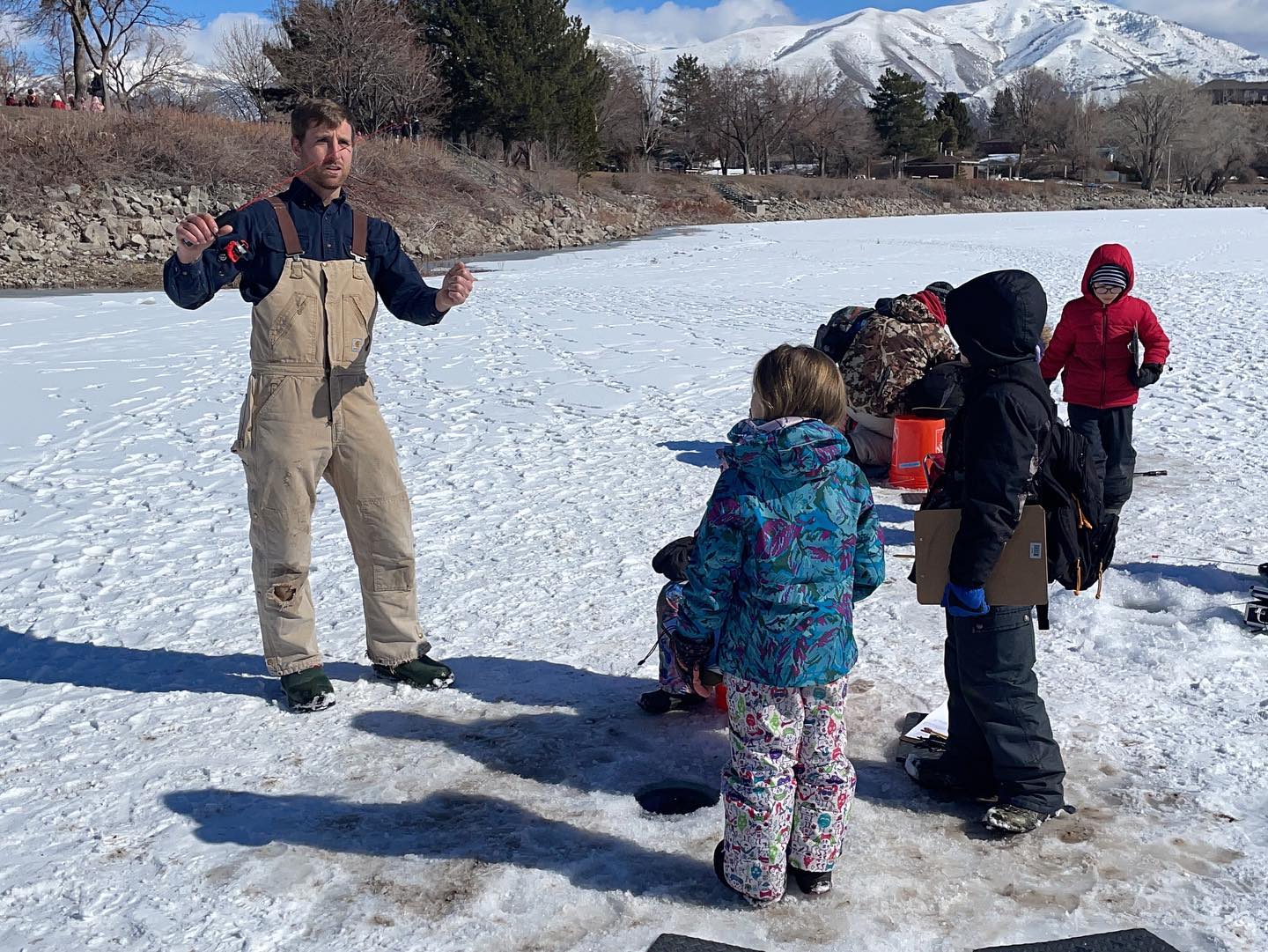
Courtesy & Copyright Edith Bowen Laboratory School (EBLS)
Experiential Learning
Eric Newell Director & Photographer
 Teaching Yellow Perch Survival Structures
Teaching Yellow Perch Survival Structures
Courtesy & Copyright Edith Bowen Laboratory School (EBLS)
Experiential Learning
Eric Newell Director & Photographer
 Fish Mathematics
Fish Mathematics
Courtesy & Copyright Edith Bowen Laboratory School (EBLS)
Experiential Learning
Eric Newell Director & PhotographerIn 2019 my friend Josh Boling shared his perspectives on place-based education beyond the walls of a classroom in a Wild About Utah piece titled “Why I Teach Outside.” I sit here today with another colleague teaching second grade at Edith Bowen Lab School in Logan, Dr. Joseph Kozlowski, who has unpacked the potential of teaching children outside.
Dr. Koz, tell us your story.
Well, first, thanks so much for having me on. I am excited to be here. I grew up in an outdoor family. My dad was a wildlife biologist with the Forest Service, so I appreciated being outdoors growing up. Then later, my uncles introduced me to hunting and fishing, and that became a big part of my life where I found problem-solving and a sense of connection to nature. When I got my first job in northern Wyoming, I became involved in a group called Adventure Club. On Fridays and weekends we would take students from the school on experiential learning trips to historically-relevant sites in the area such as Devils Tower, Jewel Cave, the Battle of the Little Bighorn area, and really help these students connect to the place that they live and the culture and the history. So, those kinds of experiences are really what help kids connect learning and connect who they are to where they are. A lot of my philosophy is behind John Dewey who talks about rich experiences being the foundation of thinking and for learning.
Can you give us an example of an experience that embodies this philosophy?
Definitely. Last year, our second grade class at EBLS set up a trip to Hyrum Dam to take the students out ice fishing. We partnered with DWR (Utah Division of Wildlife Resources) employees, expert parents, and Dr. Eric Newell, our director of experiential learning. We wanted to go out there to help students connect with that place but also learn about characteristics of animals, what they need to survive and traits of the habitat. The students were out there on their buckets, ice cold fingers, ice developing on the top of those little rods, so focused on watching one little bounce of the line, hoping to catch a fish. We ended up being able to have a rainbow trout and a yellow perch, getting to look at the different colorations on the body and these black vertical stripes on the perch and talking about how that blends into the dark reeds on the bottom of the reservoir. And the mouth structure, how one has these sharp, aggressive teeth and one has wider teeth and a wider mouth. Then, finally we looked inside their bellies where different food were in different types of fish, little minnows in the trout belly versus macroinvertebrates and little snail-like things in the perch belly, looking at how those matched the different parts of the water that those fish would live in. That type of a thing is an example of how students connect to this place in this very authentic and meaningful way.
How do you justify this type of teaching and learning in the current educational landscape?
Basically, from an ‘academic accountability’ perspective, there is not a shortage of research, specifically in early childhood where I work, which links rich at-home vocabulary, at-home math experiences, and in general rich experiences with later academic success.
Providing hands-on learning that fosters rich connection to place makes so much sense and is engaging as well. We are Shannon Rhodes and Dr. Kozlowski, and we are wild about Utah.
Credits:
Images: Courtesy & Copyright Edith Bowen Laboratory School (EBLS) Experiential Learning Eric Newell Director & Photographer https://edithbowen.usu.edu/
Audio: Courtesy & © J. Chase and K.W. Baldwin
Text: Shannon Rhodes and Dr. Joseph Kozlowski, Edith Bowen Laboratory School, Utah State University https://edithbowen.usu.edu/
Additional Reading Links: Shannon Rhodes
Additional Reading
Boling, Josh. Why I Teach Outside. 2019. https://wildaboututah.org/why-i-teach-outside/
Boling, Josh. You, Too, Can Teach Outside. 2020. https://wildaboututah.org/you-too-can-teach-outside/
Gibbon, Peter. John Dewey: Portrait of a Progressive Thinker. 2019. National Endowment for the Humanities. https://www.neh.gov/article/john-dewey-portrait-progressive-thinker
Utah Division of Wildlife Resources. Four Great Waters to Ice Fish in Northern Utah This Winter. 2022. https://wildlife.utah.gov/wildlife-news/42-utah-wildlife-news/834-find-a-baby-bird-heres-what-to-do.html

